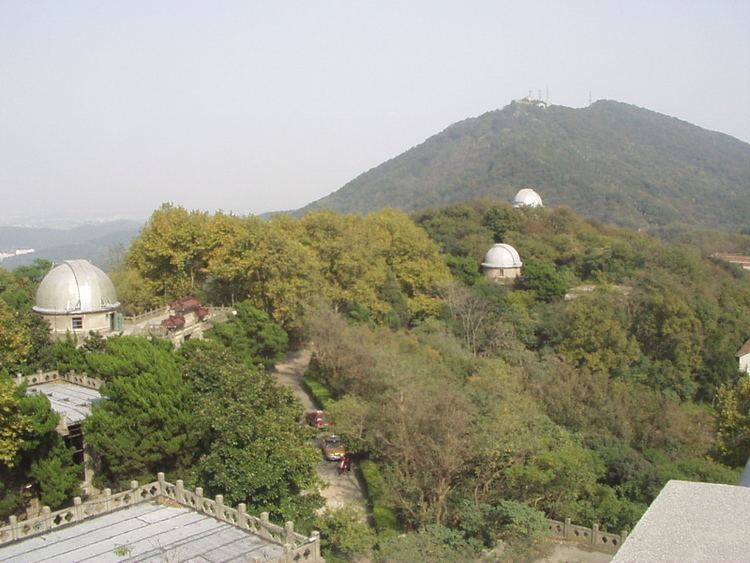Altitude 267 m (876 ft) Website www.pmo.ac.cn Phone +86 25 8434 7519 | Established 1934 Code 330 | |
 | ||
Address Tianwentai Rd, Xuanwu Qu, Nanjing Shi, Jiangsu Sheng, China Hours Closed now Thursday8:30AM–6PMFriday8:30AM–6PMSaturday8:30AM–6PMSunday8:30AM–6PMMonday8:30AM–6PMTuesday8:30AM–6PMWednesday(Qingming Festival)8:30AM–6PMHours might differSuggest an edit Similar National Astronomical Observat, Purple Mountain, Shanghai Astronomical Observatory, Ming Xiaoling Mausoleum, Linggu Temple | ||
The Purple Mountain Observatory (Chinese: 紫金山天文台; pinyin: Zĭjīnshān Tiānwéntái), also known as Zijinshan Astronomical Observatory is an astronomical observatory located on the Purple Mountain in Nanjing, China. The longtime director of the observatory from 1950 to 1984 was Chinese astronomer Zhang Yuzhe (张钰哲, 1902–1986, also known as Y. C. Chang).
Contents
- Discoveries
- Near Earth Object Survey
- List of discovered minor planets 19551983
- List of discoveries by the PMO NEO Survey Program 20062013
- References
By the late 1980s, increasing light pollution in Nanjing meant Purple Mountain was no longer viable as a working observatory. It has since shifted its focus to public education, with much of the actual scientific work being carried out in its five branch observatories located at Qinghai (in Delingha), Ganyu, Xuyi, Honghe (in Jiamusi), and Qingdao.
The Minor Planet Center credits the observatory, simply referred to as Nanking, with the discovery of 149 minor planets between 1955 and 1983, while the observatory's PMO NEO Survey Program is credited with a total of 578 discoveries between 2006 and 2013.
Discoveries
The observatory discovered the periodic comets 60P/Tsuchinshan and 62P/Tsuchinshan, as well as the non-periodic C/1977 V1 (Tsuchinshan), also known as Comet 1977 X. Many asteroids were also discovered, including the Trojan asteroids 2223 Sarpedon, 2260 Neoptolemus, 2363 Cebriones, 2456 Palamedes, and the eponymous 3494 Purple Mountain.
Near-Earth Object Survey
The Chinese Near-Earth Object Survey (CNEOS), based at Xuyi Observation Station, started observations in 2006. It uses a 1:04=1:20=1:80 m Schmidt telescope equipped with a 4K by 4K CCD detector with the drift-scanning function.
As of August 2012, the program has observed 149,971 asteroids, found 1,279 new provisional designation asteroids, and cataloged 251 numbered asteroids including five Jupiter Trojans, two Hildas, and one Phocaea. The program has also observed the position of 824 near-Earth objects (NEOs) and discovered four new ones: the Apollo asteroid (285339) 1999 JR6, and the three Amor asteroid (410195) 2007 RT147, (388567) 2007 QX14, and 2009 MZ6, still unnumbered as of 2016.
List of discovered minor planets (1955–1983)
A total of 149 minor planets were discovered by the Purple Mountain Observatory between 1955 and 1983.
List of discoveries by the PMO NEO Survey Program 2006–2013
More than 500 minor planets were discovered by the observatory's PMO NEO Survey Program from 2006 to 2013.
